
Huddie William Ledbetter, better known by the stage name Lead Belly, was an American folk and blues singer notable for his strong vocals, virtuosity on the twelve-string guitar, and the folk standards he introduced, including his renditions of "In the Pines", "Goodnight, Irene", "Midnight Special", "Cotton Fields", and "Boll Weevil".
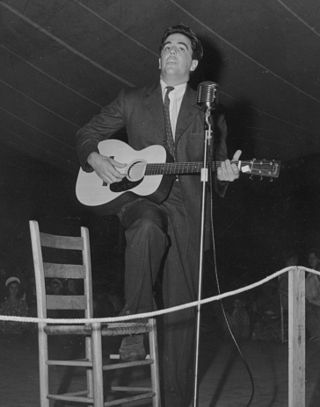
Alan Lomax was an American ethnomusicologist, best known for his numerous field recordings of folk music of the 20th century. He was a musician himself, as well as a folklorist, archivist, writer, scholar, political activist, oral historian, and film-maker. Lomax produced recordings, concerts, and radio shows in the US and in England, which played an important role in preserving folk music traditions in both countries, and helped start both the American and British folk revivals of the 1940s, 1950s, and early 1960s. He collected material first with his father, folklorist and collector John Lomax, and later alone and with others, Lomax recorded thousands of songs and interviews for the Archive of American Folk Song, of which he was the director, at the Library of Congress on aluminum and acetate discs.

Bryn Mawr College is a women's liberal arts college in Bryn Mawr, Pennsylvania. Founded as a Quaker institution in 1885, Bryn Mawr is one of the Seven Sister colleges, a group of historically women's colleges in the United States. It is one of 15 Quaker colleges in the United States. The college has an enrollment of about 1,350 undergraduate students and 450 graduate students. It was the first women's college to offer graduate education through a PhD.

John Avery Lomax was an American teacher, a pioneering musicologist, and a folklorist who did much for the preservation of American folk music. He was the father of Alan Lomax, John Lomax Jr. and Bess Lomax Hawes, also distinguished collectors of folk music.
Shirley Elizabeth Collins MBE is an English folk singer who was a significant contributor to the English Folk Revival of the 1960s and 1970s. She often performed and recorded with her sister Dolly, whose accompaniment on piano and portative organ created unique settings for Shirley's plain, austere singing style.
Ruby Terrill Lomax was an American educator and folklorist, who worked with her husband John A. Lomax to collect American folk songs, campaigned for women's education, and was Dean of Women at University of Texas at Austin.

Jean Ruth Ritchie was an American folk singer, songwriter, and Appalachian dulcimer player, called by some the "Mother of Folk". In her youth she learned hundreds of folk songs in the traditional way, many of which were Appalachian variants of centuries old British and Irish songs, including dozens of Child Ballads. In adulthood, she shared these songs with wide audiences, as well as writing some of her own songs using traditional foundations.

Mary Elizabeth Jones was an American gospel and folk singer credited with helping to bring folk songs, games and stories to wider audiences in the 20th century. Alan Lomax, who first encountered Jones on a field recording trip in 1959, said, "She was on fire to teach America. In my heart, I call her the Mother Courage of American Black traditions."

Elizabeth "Bess" Cronin was an influential singer of Irish traditional music in the sean-nós style. She sang hundreds of songs which she learnt as a youth, half of which were in the Irish language, which was her first language. She was visited and recorded by prominent collectors of traditional music including Alan Lomax, Jean Ritchie, Peter Kennedy and Seamus Ennis. Some of her songs inspired popular recordings, such as her version of Siúil a Rún, which was covered by Clannad and Celtic Women.
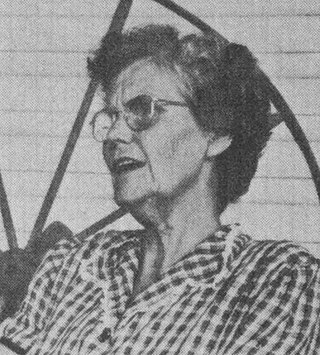
Almeda Riddle was an American folk singer. Born and raised in Cleburne County, Arkansas, she learned music from her father, a fiddler and a teacher of shape note singing. She collected and sang traditional ballads throughout her life, usually unaccompanied. Introduced to a wider public by folklorist John Quincy Wolf and musicologist Alan Lomax, Riddle recorded extensively, and claimed to be able to perform over 500 songs.
Florence Reece was an American social activist, poet, and folksong writer. She is best known for the song "Which Side Are You On?" which she originally wrote at the age of twelve while her father was out on strike with other coal miners, according to The Penguin Book of American Folk Song by Alan Lomax.
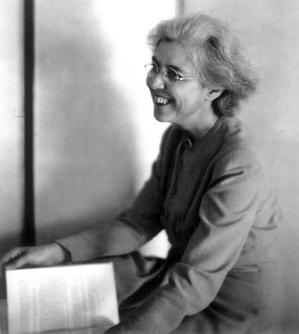
Helen Hartness Flanders, a native of the U.S. state of Vermont, was an internationally recognized ballad collector and an authority on the folk music found in New England and the British Isles. At the initiative of the Vermont Commission on Country Life, Flanders commenced a three-decade career capturing traditional songs that were sung in New England—songs that, in many cases, traced their origin to the British Isles. The timing of her life work was critical, coming as it did when people were turning away from traditional music in favor of listening to the radio. Today her nearly 4,500 field recordings, transcriptions and analyses are housed at the Flanders Ballad Collection at Middlebury College, Middlebury, Vermont and have been a resource for scholars and folk singers, since the establishment of the collection in 1941.
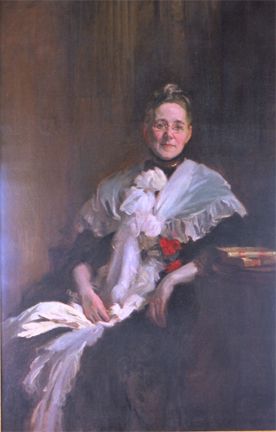
Mary Elizabeth Garrett was an American suffragist and philanthropist. She was the youngest child and only daughter of John W. Garrett, a philanthropist and president of the Baltimore and Ohio Railroad.
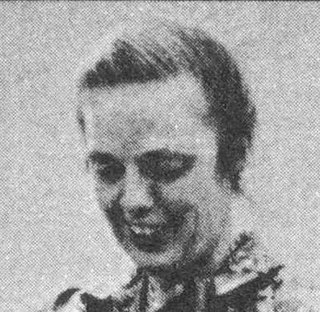
Bess Lomax Hawes was an American folk musician, folklorist, and researcher. She was the daughter of John Avery Lomax and Bess Bauman-Brown Lomax, and the sister of Alan Lomax and John Lomax Jr.
"The House of the Rising Sun" is a traditional folk song, sometimes called "Rising Sun Blues". It tells of a person's life gone wrong in the city of New Orleans. Many versions also urge a sibling or parents and children to avoid the same fate. The most successful commercial version, recorded in 1964 by the British rock band The Animals, was a number one hit on the UK Singles Chart and in the US and Canada. As a traditional folk song recorded by an electric rock band, it has been described as the "first folk rock hit".
"Alberta" is the title of several traditional blues songs.
Anna Lomax Wood is an anthropologist, ethnomusicologist and public folklorist. She is the president of the Association for Cultural Equity (ACE), established in 1985 by her father, musicologist Alan Lomax, at Hunter College, CUNY.
Sarah Ogan Gunning was an American singer and songwriter from the coal mining country of eastern Kentucky, as were her older half-sister Aunt Molly Jackson and her brother Jim Garland. Although she made an appearance in the New York folk music scene of the 1930s, she was overshadowed by her older brother and half-sister. Rediscovered in the 1960s while living in Detroit, she played at folk festivals at Newport in 1964 and the University of Chicago in 1965.

Ruby Pickens Tartt was a folklorist, writer, and painter who is best known today for her work helping to preserve Southern black culture by collecting the life histories, stories, lore, and songs of former slaves for the Works Progress Administration and the Library of Congress. In 1980 she was inducted into the Alabama Women's Hall of Fame.

Eloise Hubbard Linscott was a 20th-century American folklorist, song collector, and preservationist. She is the author of Folk Songs of Old New England (1939), considered a valuable scholarly source for American folk songs. John Lee Brooks described Folk Songs of Old New England as an American equivalent of Bishop Percy's 1765 work Reliques of Ancient English Poetry.












